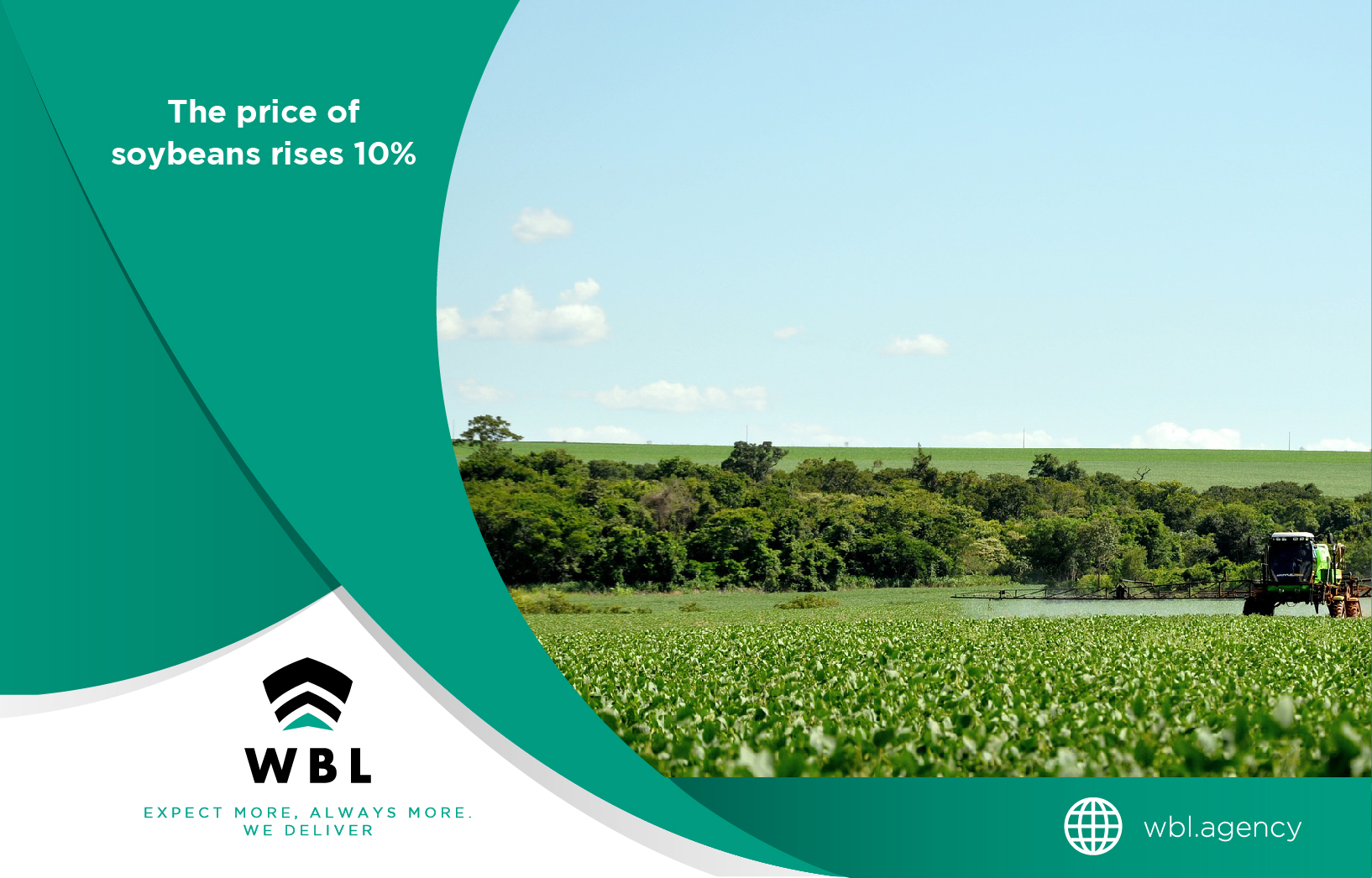The price of soybeans rises 10% in the last month, due to the drought in Brazil and strong demand from China.
The ton went from USD 350 to USD 385. Meanwhile, in the local market, producers are affected by withholdings and the exchange gap. The opinion of the specialists
The price of soybeans continues its upward run in the Chicago market, despite yesterday’s small drop, reaching the highest prices since April 2018. Between September 1 and yesterday, the value increased by $ 35, a 10%. Contracts expiring in November of this year went from trading USD 350.82 to USD 385.81 per ton. Meanwhile, the local producer is complicated by withholdings and the high exchange rate gap.
Despite the fact that in yesterday’s business conference the aforementioned contracts closed with a slight drop of USD 0.37, during the day it was known to be above USD 390 in the US stock market, which serves as an international reference when it comes to trading. establish prices of the main agricultural commodities.
Specialists argue that the strong demand for US grain by China and the drought in Brazil, together with Argentina and Paraguay, which could delay the planting of the crop, is having an impact.
“China will be buying in the United States until the end of January because they cannot buy elsewhere, to which is added the problem of the drought in Mercosur, are the fundamental points that are currently supporting the soybean market,” said the analyst of the grain market, Enrique Sarthes.
And he added: “There is a structural issue that leads China to maintain a high demand for US soybeans. In the Asian giant, the pork and chicken industries are being rebuilt and they are demanding very strong grains and it is believed that they will import more than was projected. In addition, it is impacting the prices that the largest purchases by China are attributed to the fulfillment of Phase I of the trade agreement signed with the United States, which works as a principle of the solution to the trade war that both countries carried out since the end of 2018 ” .

“In addition, there is the aggravation of the delay in planting in Brazil (due to the drought), so if last year there were sales with shipments in January of Brazilian soybeans, this time these operations may not be possible and the Chinese know that they will have to do it in the United States. In the case of Argentina, with the new differential that was established in favor of the industry, it will be difficult for it to generate more business for exporting beans than it has already generated”.
According to estimates, China could buy 100 million tons of soybeans until September next year, of which 25 million tons, at least, will be sold by the United States.
Local impact
According to the weekly report of the Rosario Stock Exchange, based on the measures of last week and the increases in the international market, “the offers for soybeans available in Rosario Square broke the barrier of USD 300 per ton, a value that It had not touched since May 2018. Maize, however, has not lagged behind, managing to return to the desired USD 170 per ton, a value that had already touched briefly in mid-September and is in line with the June highs of 2019 ”.
Although the rise in prices at Chicago has an impact on the local market, prices do not necessarily encourage the producer who still has soybeans from last season in his possession, to decide to dispose of it. In this sense, for Sarthes, beyond the temporary reduction of export duties of 3 percentage points of soybeans that deposits it with an aliquot of 30%, “there are no incentives for the producer to detach from the harvest due to the gap exchange rate, “commented the grain market analyst.
And furthermore, he pointed out: “Of what has already been sold, there are 8 million tons that have no price and 16 million tons that still need to be sold, where today the producer has no incentive to sell them, and not because of the temporary reduction in withholdings. The problem lies on the producer observes that he charges a dollar equivalent to 51 Argentinian pesos for his soybeans and that the free dollar is 150 pesos. Unless there is where to apply those pesos for the sale of soybeans, he does not sell. Currently there are no incentives to sell because there is a huge exchange gap”.
WBL Shipping Agency
For more news follow us on LinkedIn
